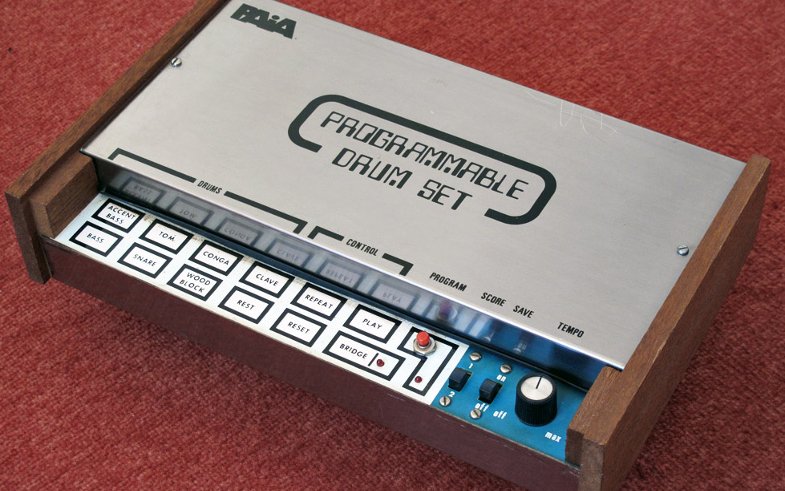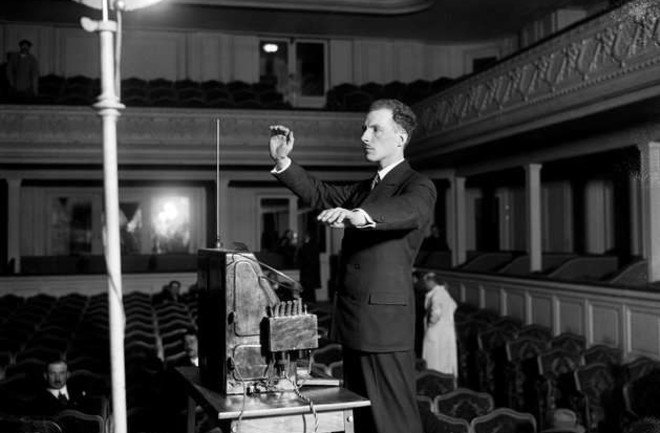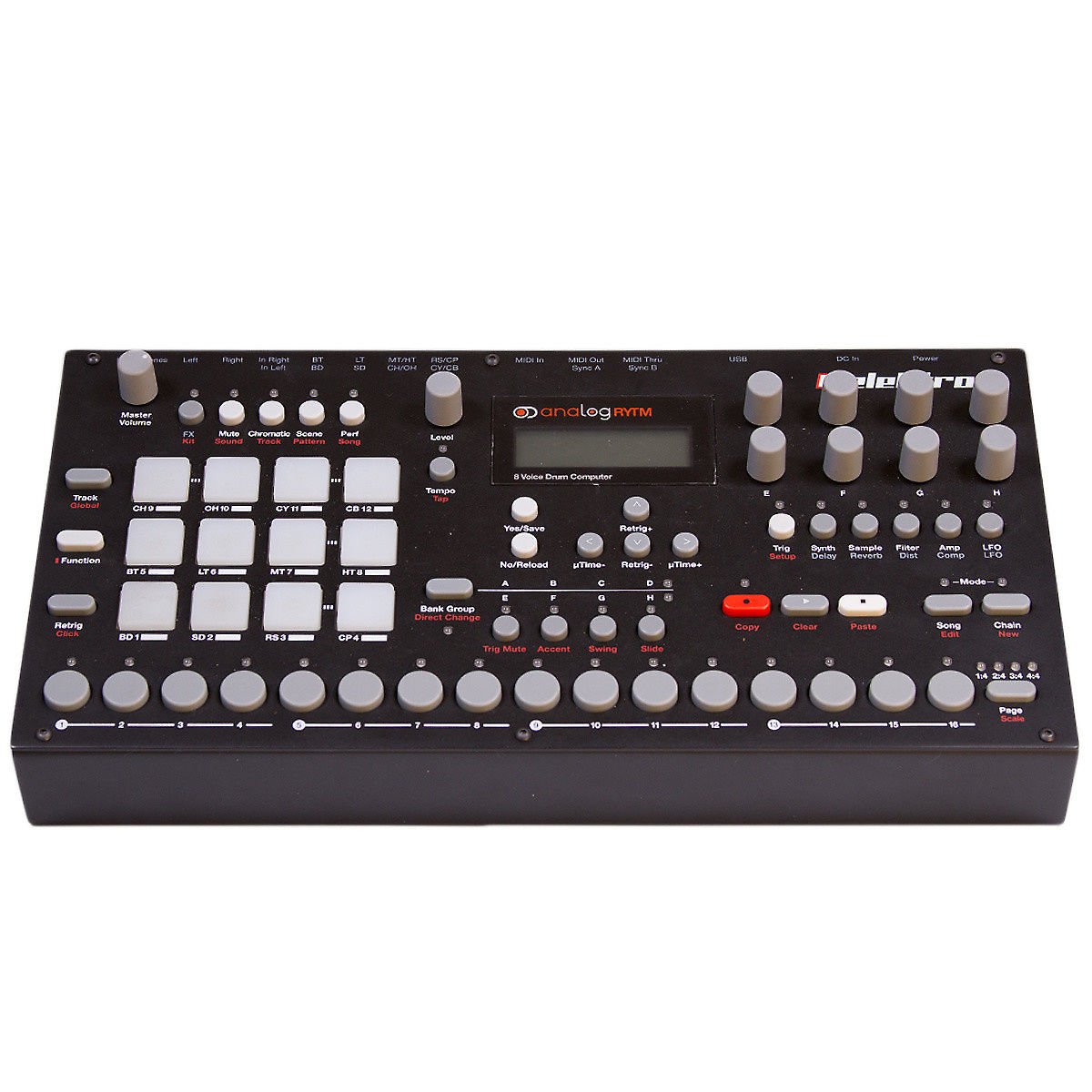The History of Beats
Like synths too? - Get your free “Ultimate Guide to Synths”eBook by registering below
Looking at the History of Beat Making
Humans have been bashing out beats since the dawn of time. Our bodies sync to rhythms, and we can all feel the pulse.
The reason 120bpm is the most common tempo for dance music?
That is the speed our heart pumps at an excited state (ie dancing like there is no tomorrow in your favourite club).
It's beyond the scope of this eBook to give you a full history of beat-making, but we will look at some of the landmark tools available to the modern electronic music maker, and learn some quotes from the wisest of producers.
Once we've had a look at the story of beats, this eBook then covers a plethora of tricks you can use in Ableton.
The First Ever Drum Machine
Believe it or not, the first ever drum machine was invented in 1206. Described in the text “The Book of Knowledge of Ingenious Mechanical Devices”, it was a mechanical device that used rotating pegs and levers that would trigger percussion sounds as they moved around.
Al-Jazari, the Arab engineer, came up with the idea when he lived in the country we now call modern-day Turkey. It would take centuries before the drum machine started to resemble the devices we know & love today.
By the early 20th Century, Russian engineer Leon Theremin was on a run of successes. His invention of the spooky sounding theremin - the only instrument you can play without touching it - and the first ever electronic music instrument - garnered him international success.
“I conceived of an instrument that would create sound without using any mechanical energy, like the conductor of an orchestra.
The orchestra plays mechanically, using mechanical energy; the conductor just moves his hands, and his movements have an effect on the music artistry” - Leon Theremin
This led to the development of the Rhythmicon, in 1932, which could electronically play 16 different patterns and was initially received with considerable interest, but eventually fell by the wayside.
It wasn’t until the 1970’s drum machines really found their place in popular music, so let’s fast forward to take a look at this era.
Roland's Dominance
Roland are a Japanese music technology company that are ubiquitous in electronic music's development.
The original machines they created since 1972 are coveted, and referencing the 808, 909, 707 etc has become a musical language.
Let's look at their landmark products and start to unravel this code.
CR78 (1978) - Not the company's first ever drum machine, but their first huge commercial success. The sound of this retro box is all over disco records, and even used by the new wave band Blondie. A go to for a softer sound that still has a lot of energy.
TR-808 (1980) - What other drum machine has a full length feature film about it? That should give you an idea of the importance of this box. Even if you've not heard of it, you'll have heard it on countless tracks.
"Technologies are creating previously undreamed-of avenues of expression in many different fields.
It is a wonderfully rich age for artists of all sorts." -
Ikutaro Kakehashi, Founder Of Roland, and inventor of the 808
Famous for its huge booming kick drum, snappy percussion, airy cymbals, and my personal favourite sound of all, the 808 "cowbell"
TR-909 (1983) - This pasty looking box was designed to be a punchier & more snappy sibling to it's elder 808. Originally a commercial failure, units now sell for thousands of pounds.
Check out the 909 for a filthy snare, energetic hi-hats, and a kick that punches you in the chest.
What happened when real drum sounds end up in an electronic Drum Machine?
Almost all the original drum machines generated their sounds using electronic circuits and components, and this process of creating sounds is know as analogue. You'll hear that term a lot, used to describe drum machines, and synthesizers.
Analogue sounds used to be the only available choice for producers until we hit 1982 and the Linn Drum was introduced.
Designed by Roger Linn, this was the first ever drum machine to use pre-recorded sounds of drums (also known as samples) as the sound source.
The quality of the sounds out performed anything at the time, and gained famous fans, including Prince, Billy Idol & Madonna. You'll still hear these sounds in modern tracks, especially in the synthwave genre.
“For the future, I think we’ll see the drum machine continue to evolve as a live performance instrument, as opposed to an offline production editing product.
There are some wonderful drum machine players out there with some highly evolved performance gestures.”
Roger Linn in 2013
Modern Drum Machines
The drum machines of the 21st century usually are an intuitive blend of analogue & sample based designs. Modern features like easy to use interfaces, display screens, and a large memory to save thousands of presets and loops make them an amazing, hands on tools.
Good examples are the Roland TR8-S, the Novation Circuit, and Elektron Analog rytm.
Companies like Behringer are also making exact clones of some of the original drum machines mentioned above, for a fraction of the price of the originals.
Software Drum Machines
You'll find all these features and sounds inside any modern DAW (Digital Audio Workstation). Ableton is absolutely jam packed with the sounds and features you need, so let's take a look at how you can start to make some beats on your computer right now!




